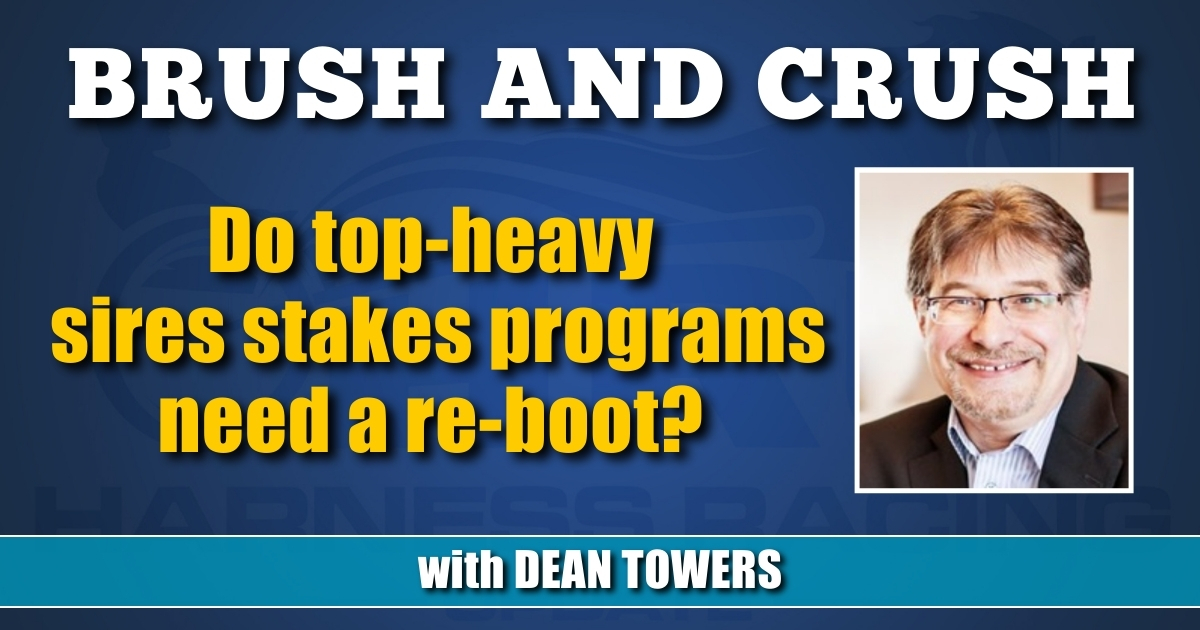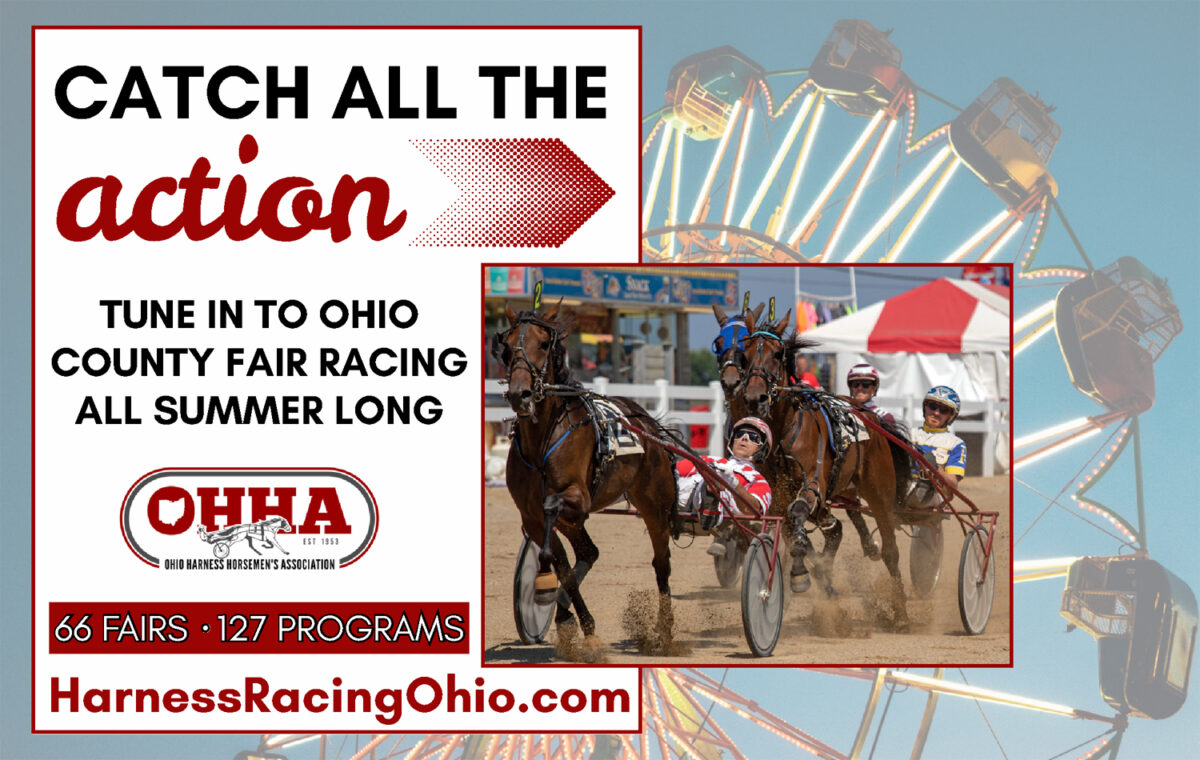Do top-heavy sires stakes programs need a re-boot?
Sires stakes programs were not designed to compete with open stakes, and it’s hurting the business.
by Dean Towers
If you have opened a Meadowlands program recently and wondered where the young horses are, you’re not alone.
One of the more talked about horses coming back this year is Admiral Hill and to watch him race you’d have to have tuned in to a Monday card at Oak Grove. There, the Admiral faced Meadowlands Pace starter Combustion, among others like Tip Top Cat. Apparently not many of you knew about it, because the win pool totalled around $3,000. The purse was a sires-staked infused $50,000.
Leaving aside the fact that when a win pool reaches barely 5 per cent of the purse it’s a flashing red light indicator, there’s much more to it, in my view. With it happening virtually everywhere, it’s harming the economics of the sport.
Back in the 1980s and 1990s most of us will remember things were much different. At that time, the purse gaps between stakes events were clear and eminently logical.
If you had an open stakes horse — say a Meadowlands Pace or Breeders Crown horse — you were in the top echelon. To maximize your horse’s earning power, you made the necessary payments. The gap between a stakes event and a state or provincial event were many multiples.
A step down from that was the sires stakes, where your colt or filly was not open stakes material. The purse gap between those events and a non-winners two or three overnight, or a 2- or 3-year-old open, were also clear and logical.
Rarely, if ever, would open pacers and fillies face sires stakes pacers and fillies. It was the staple of the system, and it allowed for different sets of breeders and yearling buyers, creating a pretty big tent. Both systems thrived.
In 2024, this has been turned on its ear.
The Kentucky Sires Stakes program is the most glaring example. Not only do open caliber stakes horses race for open stakes purses in a state program, they also have to race in lesser events to earn points for finals; finals that rival the purses of our best and most historical stakes races.
I understand that the Kentucky program is a unicorn and there are tier “A,” “B” and “C” finals, but in my opinion it’s complete overkill, because it’s a system built around what’s already been created in others, compounding the problem.
In Ontario, Super Finals go for $300,000, and the horse who tends to win this race wins most Gold Finals, at already inflated purses, sometimes in very short fields.
In Ohio, it’s similar, with its final at even a greater purse of $400,000. In Pennsylvania, it’s $252,000 for their year-end finals. In New York, $225,000.
I’m all for making money, but when state and provincial breds are not staking to open events as they once were; when the top state and provincial breds dominate every “A” level stake event and then get even more benefit in a rich final (while crowding out the smaller stables), isn’t this way too much?
Harness racing has always been big tent. It’s always been about the small-time owner or horseperson racing each week at a fun event; hopping in the truck and racing for $25,000 or $30,000 when racing at home meant racing for $8,500. It meant buying that $12,000 yearling, because that Dream Of Glory or Armbro Omaha colt had a shot to make money in a lucrative sires stakes program.
In bye-gone years there was an expectation your state-bred wouldn’t have to race Niatross in an open sires stake. He was on the cover of Sports Illustrated, getting ready for the $1 million Meadowlands Pace, racing in front of tens of thousands of people, generating millions and millions in handle.
It all felt exactly right. And when it feels right in this game, a lot of people breed and buy horses.
Meanwhile, in 2024, the hottest 4-year-old horse on the planet raced at Oak Grove with almost no one watching, while simultaneously scaring off every mom and pop trainer from entering. In 2024, fantastic horses, capable of winning our biggest events and generating excitement for the sport, will be in Kentucky racing for $400,000, or in Ontario racing for $250,000 at 1-5 odds, while smaller stables are wondering how to pay their feed bill.
There’s something very wrong with this, and in my view, revamping the various sires stakes programs is the only solution to making things right again.
















